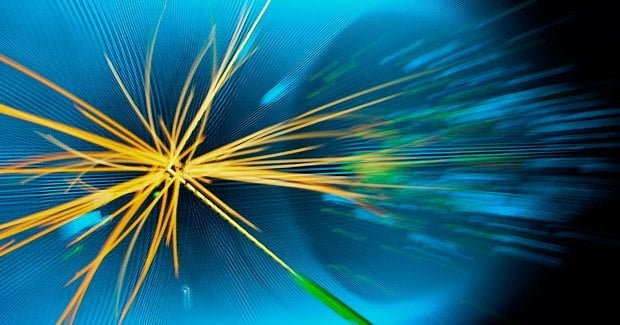Aussie scientists helped discover ‘God particle’

FEDERAL SCIENCE MINISTER Chris Evans said he hopes the role of Australian researchers in helping find the so-called ‘God particle’ will inspire future Aussie scientists.
Physicists at the European Organisation for Nuclear Research, or CERN, said on Wednesday they have discovered a particle consistent with the Higgs boson or the God particle, a theoretical particle that is key to understanding of how the universe was created and how it could end.
CERN said the discovery was a milestone in our understanding of nature. Senator Evans offered his congratulations to CERN and he thanked Melbourne University Professor Geoffrey Taylor for leading the Australian scientists behind the research.
Australian role in Higgs boson discovery
“Australia can be proud of the role our scientists played in research into the Higgs boson, and I hope this breakthrough will inspire a new generation of Australian researchers and scientists,” the Senator said in a statement.
Geoffrey told reporters that proving the existence of the particle was a pivotal moment. “It will enable us to gain further understanding of the nature of the fundamental building blocks of nature, how they interact and how they gained mass in the very first fraction of a second after the Big Bang,” he said.
Monash University’s Dr Csaba Balazs said “the existence of the Higgs boson is a cornerstone of Einstein’s dream. In 1955 Albert Einstein died without fulfilling his lifelong dream: the unification of all physical laws in a single equation. Since then thousands of physicists have pursued the quest for unification.”
Realising Einstein’s dream
“Today, after 50 years of its theoretical introduction, we have learned that the Higgs boson probably exists. This is a tremendous step ahead in our fundamental understanding of unification and in realising Einstein’s dream,” Csaba said.
Physicists have been trying for 30 years to find evidence that the Higgs boson exists, leading in recent years to the CERN experiments using the $10 billion Large Hadron Collider (LHC) particle accelerator, found 100m underground near Geneva, Switzerland.
A summary of experiments conducted by one of the two teams at the LHC said further analysis of the particle is still needed. “More data are necessary to establish whether this new particle has all the properties of the…Higgs boson, or whether some do not match, implying physics beyond the standard model [which is used to explain the universe at the subatomic level],” the statement said.
A spokesman for the second team called ATLAS, Fabiola Gianotti, said they had observed clear signs of a new particle, but “more data and more study will be needed to determine the new particle’s properties.”
Professor Anthony Thomas, based at the University of Adelaide, says the discovery is the most important and profound in particle physics in almost 30 years.
“The Higgs represents the key missing piece of the jigsaw puzzle that is the famous standard model of nuclear and particle physics,” he says. “It has been anticipated for more than four decades and were it not there, theorists all over the world would have been back to their drawing boards in desperation.”
RELATED STORIES




